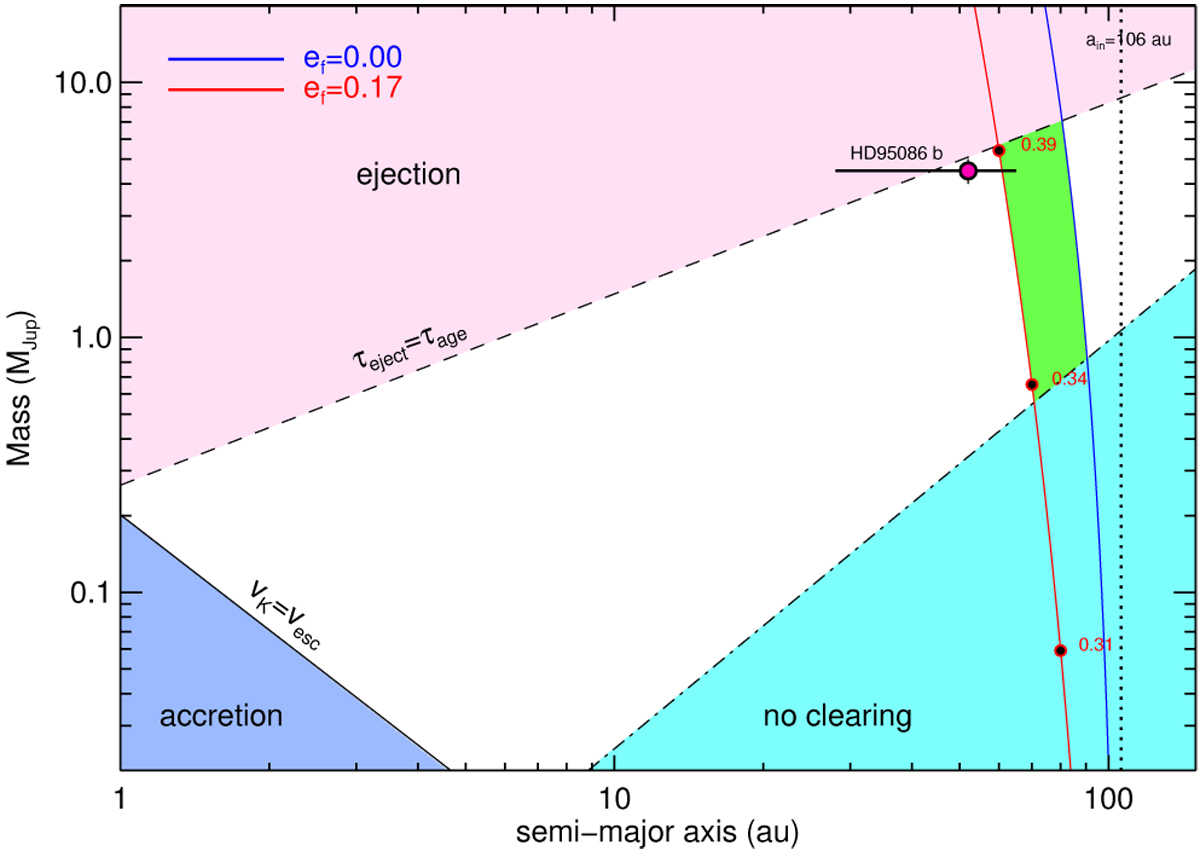Fig. 16

Constraints on the mass, semi-major axis and eccentricity of the planetary perturber to explain both the inner belt replenishment and the formation and eccentricity upper limit of the outer belt. Light purple and dark blue areas show excluded regions where particles encountering a planetary perturber of given semi-major axis and mass will not remain in the system to replenish the inner belt without being ejected or accreted for timescales younger than the age of the system, respectively. Planets with escape velocity, Vesc, larger than the Keplerian velocity, VK, will most likely eject particles after multiple kicks. On the other hand, if Vesc ≪ VK then accretion will likely be the final outcome. This sets the limit shown by the solid black line. In addition, ejection might only happen after several encounters, thus, material can remain in the system for timescales shorter than the ejection timescale. Considering the age of HD 95086, this set the ejection limit shown with the (dashed black line). Moreover, light blue area shows region where the planetary perturber will be not massive enough to stir the disk and carve the outer belt. The blue and red curves delimit dynamical solutions for which the planetary perturber can create an outer belt eccentricity ranging between 0.00 (circular belt) and 0.17 (ALMA upper limit from Su et al. 2017), respectively. Corresponding planetary perturber eccentricities required to create an outer belt eccentricity of 0.17 are overplotted in red. The green area shows the final region for which the planetary perturber semi-major axis, mass and eccentricity meet all the above dynamical constraints to explain both the inner belt replenishment and the formation and eccentricity upper limit of the outer belt. Finally, the predicted location of HD 95086 b by our MCMC orbital fitting analysis is reported in pink with error bars.
Current usage metrics show cumulative count of Article Views (full-text article views including HTML views, PDF and ePub downloads, according to the available data) and Abstracts Views on Vision4Press platform.
Data correspond to usage on the plateform after 2015. The current usage metrics is available 48-96 hours after online publication and is updated daily on week days.
Initial download of the metrics may take a while.


